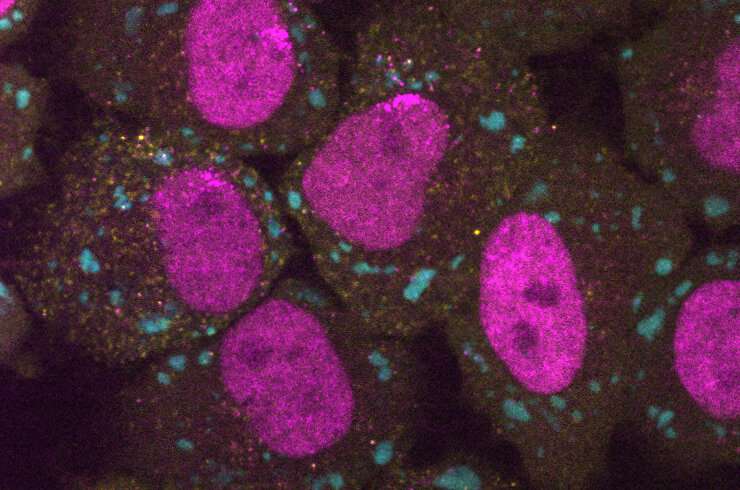Thinking afresh about how cells respond to stress

Just like people, cells get stressed too. A sudden drop in oxygen, overheating, or toxins can trigger a cascade of molecular changes that lead cells to stop growing, produce stress-protective factors, and form stress granules—proteins and RNA molecules huddled together into membrane-less organelles. Although the function of stress granules remains largely unknown, it is assumed that they contain only RNAs that are not translated into proteins. Now, a study upends this longstanding idea, showing that messenger RNAs (mRNAs) within stress granules can indeed make proteins.
mRNAs are single stranded molecules of RNA, which are transcribed from DNA in the nucleus—for eukaryotes—and are then transported to the cytosol where they are translated into proteins. During the cellular stress response, many mRNAs cluster inside stress granules—an observation that led scientists to think that these mRNAs stopped getting translated when the cell is threatened.
To work out what happens to mRNAs within these stress-induced organelles, researchers from the group of Jeffrey Chao, led by postdoc Daniel Mateju, set out to watch single RNA molecules interacting with stress granules inside living cells undergoing stress. To do so, they labeled stress granules and individual mRNA molecules with fluorescent tags. Thanks to an innovative antibody tagging tool known as SunTag, the researchers could also visualize proteins as they were being produced with single-molecule precision.
Using this approach, Mateju and colleagues discovered that even when an mRNAs is stably localized within a stress granule it can still be translated into proteins. While translation of most mRNAs is inhibited during stress, specific genes (e.g. ATF4) that are necessary for mounting the stress response increase their translation during these conditions. Using ATF4-SunTag as a model transcript, they found that its translation in stress granules was not a rare event and that the entire translation cycle (initiation, elongation, termination) can occur in stress granules. Additionally, they found that evidence that mRNAs whose translation is inhibited during stress could also undergo translation in stress granules.
"Our results demonstrate that mRNA localization to stress granules is compatible with translation and argue against a direct role for stress granules in inhibition of protein synthesis." says Mateju, the first author of the study.
The findings illuminated unprecedented details of the cellular stress response. The ability to image these processes at the single-molecule level could further help to better understand the functions of membrane-less organelles and other clusters of molecules called biomolecular condensates, which are thought to regulate a wide range of biological processes.
More information: Daniel Mateju et al. Single-Molecule Imaging Reveals Translation of mRNAs Localized to Stress Granules, Cell (2020). DOI: 10.1016/j.cell.2020.11.010
Journal information: Cell





















